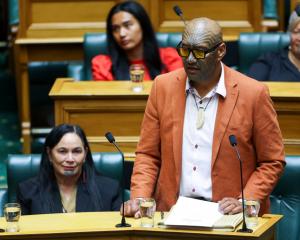
Some contrarians stubbornly hang on to the view that humans are not responsible for global warming and the increasing emissions of greenhouse gases, particularly carbon dioxide, over the past few decades.
But even these few dyed-in-the-wool reactionaries, who consider it the result of natural changes in the Earth’s dynamics, surely must agree that climate change is actually happening, if they are honest and take their heads out of the sand (before rising sea levels wash much of it away).
Whatever that small group may still think, it’s time to forget about them and their spurious arguments and move on for the benefit of all.
Many millions of words have been written in thousands of documents, and spouted forth in hundreds and hundreds of speeches, about the need to do "stuff" to bolster our people and communities against extreme weather and sea-level change. But what has actually been done? Even in the face of some major natural disasters in recent years, the answer is, pretty much nothing.
Now, finally, the Government has released something for New Zealanders to sink their teeth into — a draft six-year national climate-change adaptation plan which aims to build a more climate-resilient country.
This draft, released by Climate Change Minister James Shaw this week, comes with a salutary message — that knee-jerk reactions to extreme weather events are becoming increasingly less credible in the face of the need to plan and prepare.
As Mr Shaw eloquently and accurately puts it, "for too long we have pushed climate adaptation to the back of the cupboard".
The plan, and proposed work programme, is well overdue. It is difficult, though, and also probably unfair, to try to blame any individuals or groups, ministries or politicians, for that. There has been a lot of slack in the system, a bit like a bike chain which is not properly engaging with the chain wheel.
Through this document the Government is signalling that, not only do we still need to lower our emissions, but also we must learn to live with a changed climate which is now locked in.
The Government is also making it perfectly clear it is not going to shoulder the financial burden of climate-change effects alone. These costs will have to be shared with local government, homeowners, their banks and insurance companies.
Clearly there will be a cost to Kiwis of living in better protected communities or of being part of a managed retreat away from an encroaching shoreline or frequently flooded river. Insurance costs will also help determine where people can afford to build, live and work in the future.
The plan also proposes freeing up access to climate data, which is a good thing, as long as that data is accurate and trustworthy. Without it, policies and plans cannot be based on the most rigorous science.
Good data is a taonga. In recent years, New Zealanders have been swamped by a lot of so-called new weather records being announced on social media, mainly by Crown research institute Niwa. Unfortunately, Research, Science and Innovation Minister Megan Woods appears unwilling to rein Niwa in. Let us hope this doesn’t have repercussions in terms of crucial planning down the track.
We don’t have to look far, or delve too deeply into the memory, to find recent examples of significant climate change-exacerbated issues around the South Island.
Think of the terrible floods in Westport in July last year and again this February, the mid-Canterbury floods almost a year ago, the ongoing inundations in Tairawhiti, and the fires in Southland’s Awarua-Waituna wetlands. And always the plight of South Dunedin is front of mind.
We encourage you to take some time to look at the draft plan and make a submission. Few things will be as important to the future of us all as getting this right.













